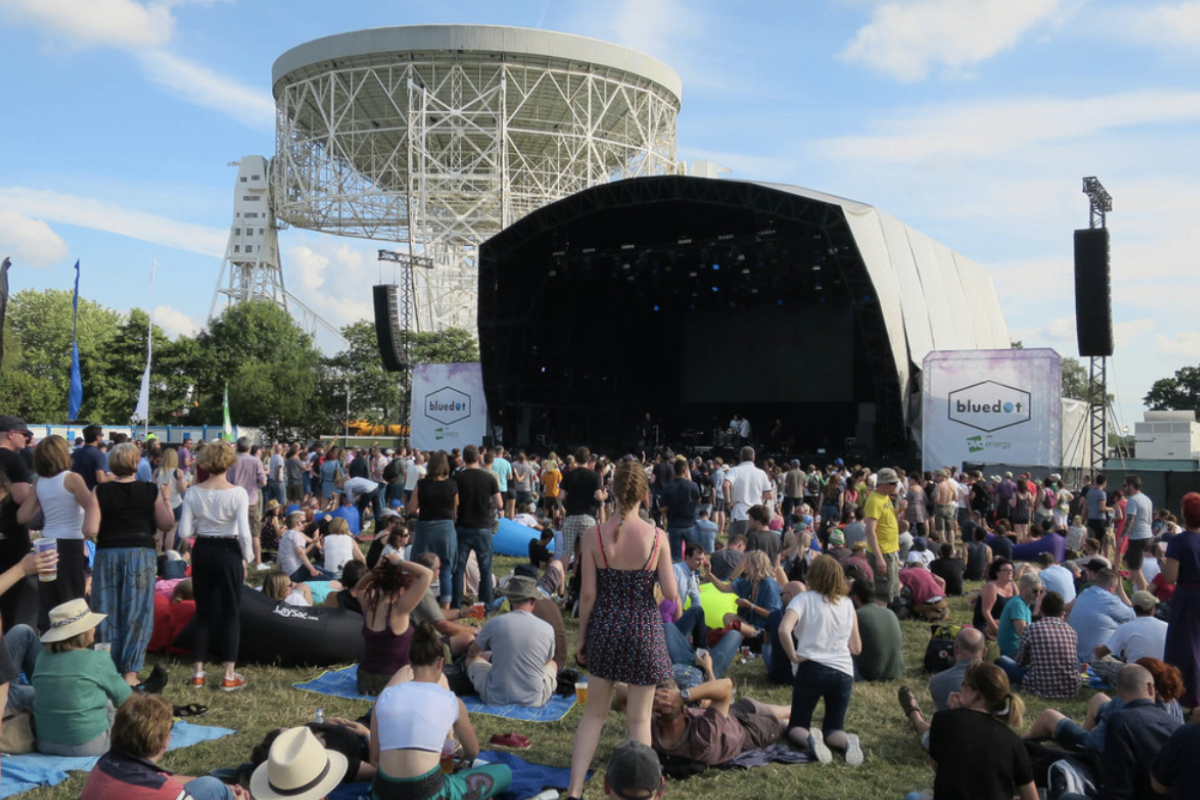
Bluedot is one of the AIF's member festivals
Photo: Hugh Venables/Creative Commons
Rising costs ‘devastating’ independent festival sector
Trade body says the risks associated with staging a festival are now 'very high' due to increased production costs and a drop in the disposable income of audiences.
The cost-of-living crisis, rising supply chain costs and the ongoing impact of the pandemic are presenting major challenges for independent music festivals, according to a new report.
The Association of Independent Festival's (AIF) first annual report on its 105 members says that margins for independent festivals are tight, adding that rises in supply chain costs such as energy, production, staging and security are “untenable” following increases of more than 30% since 2019.
“Risk is now very high. Festivals are increasingly costly to produce. Expected returns if events do breakeven are very reduced,” the report says.
READ MORE:
AIF festivals are in line for a collective gross revenue of £195m this year, with expected gross expenditure of £177m.
While the report does not say if the collective figure represents a loss for some festivals, it underlines that rising supply chain costs, coupled with inflation, remains “a major issue affecting all festivals”.
“Festivals set ticket prices and go on sale up to one year in advance of their event, so are unable to mitigate unexpected rises with additional increases in ticket prices,” the report says.
To combat the rising supply chain costs that are having a “devastating impact on the sector”, AIF says it will continue to lobby for a reduction in VAT from 20% to 5%.
Other work for the trade body will include a public facing campaign and seeking music industry, third sector organisations and government support to attract more young people to festivals.
AIF’s report says as a lasting consequence of the pandemic, many young people, particularly those aged 16-19, are yet to attend their first festival.
“[Young people] have not joined festivals mailing lists and communities, and so are not engaged in buying tickets or on ticket payment plans. They have missed a pivotal cultural moment that so many others have been able to experience.”
Meanwhile, for those already attending festivals, AIF has noted a drop in people attending more than one event a year, which is attributed to the rising cost of living.
The report says festivals have reacted quickly to the issue, with a strong uptake in payment plans and extending the period over which audiences can purchase tickets.
Audiences and line ups
AIF member festivals are on course to attract a total of 3.3 million people this year, the report says, with the capacity of events ranging from 500 to 80,000.
From this figure, 1.3 million are expected to attend ticketed events, while unticketed events will attract 2 million.
AIF’s report also provides detail on the gender-balance of their member’s line-ups, following a recent Women & Equality Committees which heard of the “pipeline issues” affecting booking female headliners at UK festivals.
According to the report, almost three-quarters of AIF members (74%) will feature a female headliner on their bill, while 15% have an equal split of male and female headlines. One event has all non-male headliners.
The gender-balance is improved when reviewing the entire line-up of a festival. One fifth (20%) of AIF festivals have a 50/50 split this year, while a further 18% have more female than male acts.
While this means the majority of independent festivals still have more male acts than females, AIF’s report says their member’s commitment to improving representation for women on line ups “leads against all other groups of festivals”.
The trade body says it will complete a survey and further insights into gender on stage and backstage later this year.
Join the Discussion
You must be logged in to post a comment.